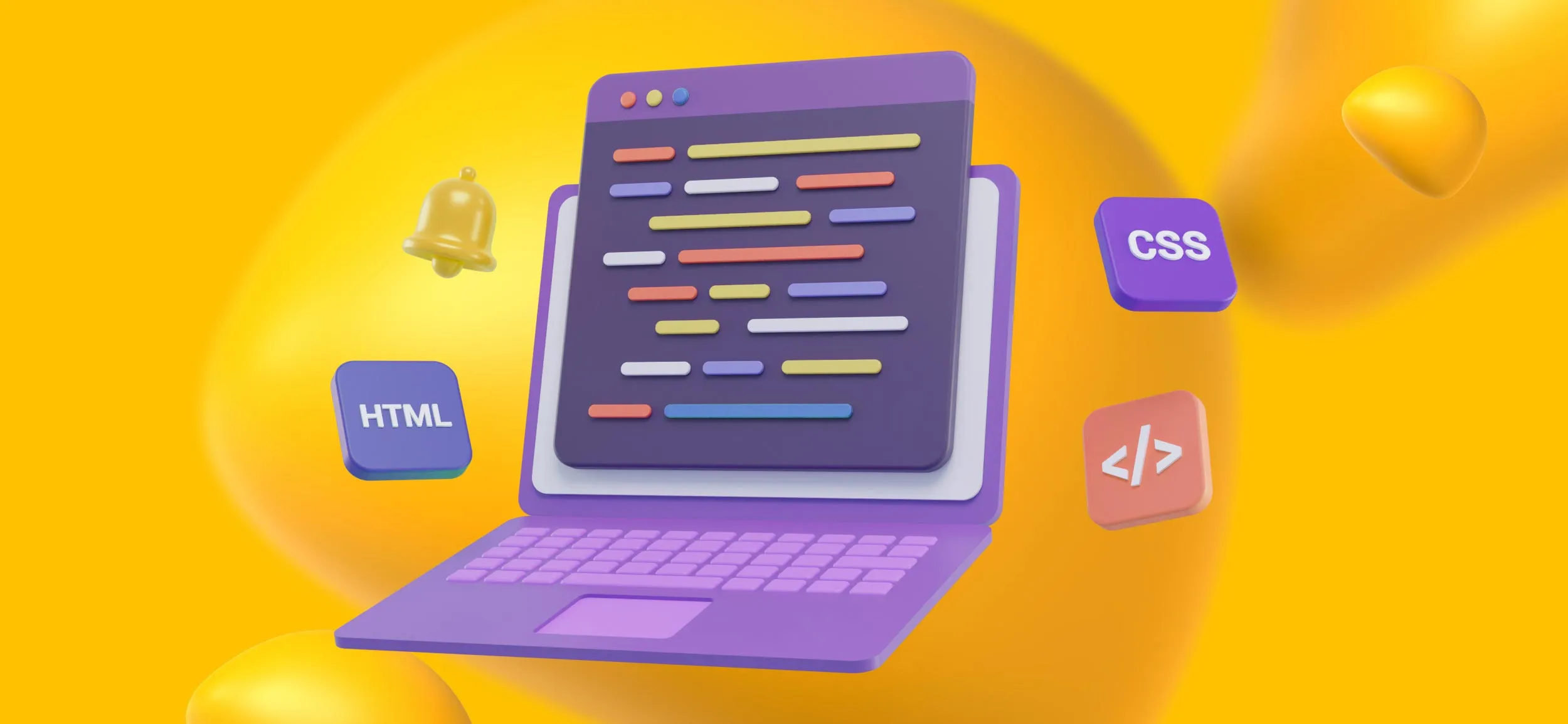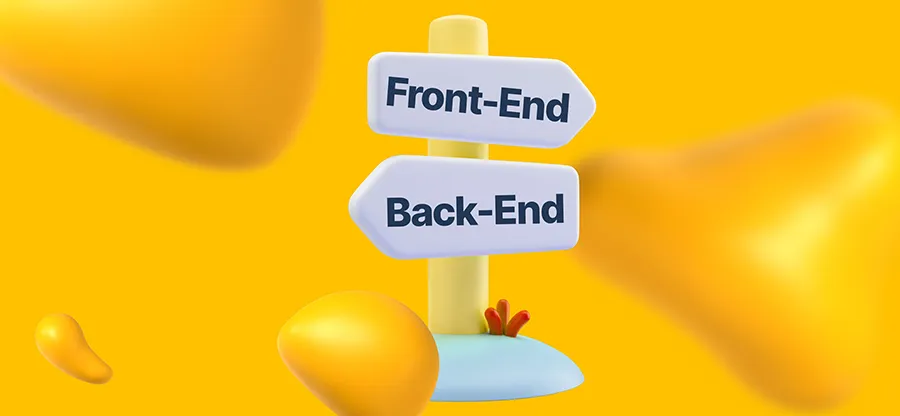In an increasingly digital age, web development has emerged as a powerhouse career choice for both youngsters entering the workforce and established folks looking to change careers.
It’s gotten extremely popular and judging by all of the online ads for coding and programming academies, it’s only going to grow. It’s not hard to see why either.
With so much of our lives online, companies everywhere are counting on web developers to help them create websites to showcase their products or services in the best possible light and if you’re looking to get into web development, they could be looking for you too!
So, whether you’re already equipped with some programming skills or you’re considering a change in career into the exciting world of web development, this blog is going to take you through the differences between front end and back end developer jobs so you can decide which path is the path for you.
What is a Web Developer?

A web developer is a super special professional who has the skills to create and maintain websites and applications.
The job is usually broken up into two essential layers: front end and back end.
Here’s a deeper dive into what that actually means:
Front End Developer
Front end web developers are responsible for creating the user facing side of things, like the website's layout, design, navigation, and the interactive features that users see and engage with when they visit your site.
Their role is to create a website that is not only functional, but one that creates a great user experience and is as visually appealing as it can possibly be to keep your customer scrolling effortlessly and visiting frequently.
Background Needed
So, what certs do you need to become a front end developer?
While there isn’t a necessary degree to have, front end developers need to be proficient in the coding languages that are used to structure and style web content, like:
- HTML / CSS
- JavasScript
- Version Control / Git
- Browser developer tools (Google Chrome, Mozilla Firefox, Microsoft Edge, Safari, etc.)
They also need a strong foundation in graphic design, since it takes a special eye to make websites visually pleasing and not like a '90s Geocities site.
And while it’s not always required, it’s good to have at least basic back end development knowledge, especially since front end developers often have to collaborate with back end developers to get a website built.
Tools Used
Front end developers use the coding programs above, as well as testing tools, browser extensions, HTML, CSS, and Javascript frameworks and libraries, and tools like Webpack, Gulp, or Grunt to automate tasks like bundling, minifying, and optimizing code.
They also take advantage of graphic design tools like Adobe Photoshop, Illustrator or Figma to create the visual assets they need.
Things evolve quickly though, so, as a front end developer, you’ll have to be able to use these tools and be willing to learn any that may pop up for a specific project!
Back End Developer
A back end developer is your go-to for maintaining the service side components of websites, applications, and software systems.
While a front end developer's focus is on creating user interface and client interactions, back end developers work behind the scenes to make sure everything is running smoothly on the server and the databases.
They handle data, processing requests, and manage the server infrastructure as well.
Let’s dive a little deeper:
Background Needed
While not completely necessary, most employers require back end developers to have a bachelor’s degree in computer science, software engineering, or information technology.
However, it is totally possible to gain the skills you need through self-learning, coding bootcamps, or on the battlefield.
You’ll also need to familiarize yourself with these server side programming languages:
- Ruby
- Python
- Java
- PHP
- Node.js
- C#
Plus, these databases:
- MySQL
- PostgreSQL
- SQL Server
- MongoDB
Tools Used
Aside from learning the above programming languages and databases, back end developers use a variety of tools and technology to help them design, build, deploy and maintain the server side of their websites.
These include frameworks and libraries to streamline developer, version control systems like Git for collaboration, testing and debugging tools to make sure their codes are correct, and cloud services for scalable and reliable hosting, plus API development tools, security measures, and other monitoring solutions.
Full-Stack Developer
Of course, it’s possible to do it all and become a full-stack developer!
Full-stack developers have the skills and tools of both front end and back end developers and do both ends of the spectrum, allowing them to create entire web applications from start to finish.
Many startups and small businesses specifically look for full-stack developers for their companies to help save on costs (why hire 2 when you can hire 1?) and streamline their web projects.
If all of these skills and tools are (or could be) in your wheelhouse, it’s definitely worth it to be an expert on both the server and client side!
Which Path is Right for Me?

If you’re not sure in which direction you should go and what skills you should start picking up, it’s good to look at the following:
Specialties
Front end and back end developers cover very different aspects of website and software development.
If graphic design and UI / UX is more your thing and the programming languages and database management of back end development do not appeal to you, then it’s possible that front end development is a better fit for you.
However, if coding is your jam and you enjoy problem solving and don’t mind the added responsibility (if the website crashes, it’s on you!) of back end development, then you might be a potential back end developer in the making!
Take a look at the tools and languages you’d need to learn to be effective and see which is a better fit for your style and personality.
Potential Careers
While both developers build websites, careers can look a little different. Front end developers can become UI / UX designers or web designers who create appealing layouts and interfaces.
Back end developers can similarly become API developers who specialize in implementing APIs for seamless data exchange, or DevOps Engineers who ensure smooth deployment and operation of web apps.
Front End vs Back End Developer Salary
Salaries for both roles can vary based on experience, location, and the size of the company you work for, but, generally, both offer very competitive salaries.
The average salary of a front end developer in the US of A is around $86,000, with a junior developer salary of about $49,000.
Because of the added responsibility of back end development and the demand for their special skill set, however, it’s possible that you can earn more as a back end developer.
The average US back end developer salary is $118,000 with entry level positions starting around $97,000.
Where Can I Gain The Skills I Need?
While a computer science or other similar degree can teach you everything you need to do, the good news is that you don’t have to invest in 4 years of college to get the skills you need.
There are several reputable coding bootcamps like the Flatiron School, Codesmith, Bloc, and Le Wagon that provide online classes and comprehensive training in web development and other programming skills.
You can also pick up some other online classes or teach yourself using online tutorials or find a coder in your area and learn from them.
<div class="c-blog_comp-cta cc-component-2"><div class="c-blog_comp-cta-left"><div class="c-blog_comp-cta-left-wrap"><img src="https://global-uploads.webflow.com/61cdf3c5e0b8155f19e0105b/63695243d096983691046ac3_Potential-Creative.png" loading="lazy" alt="" class="c-blog_comp-cta-left-img"></div></div><div class="c-blog_comp-cta-right cc-dark"><div class="c-blog_comp-content"><div class="c-text-wrapper cc-mb-32"><div class="c-title-4 cc-bold"><strong>Like to work as a freelancer with consistent income?</strong></div></div><div class="c-text-wrapper"><div class="c-text-2">Designity's collaborative model is designed to give you all of the perks of being a freelancer without the income instability.<br></div></div></div><div class="c-blog_comp-wrapper"><a href="http://designity.com/creatives" target="_blank" class="c-button w-button"><strong>Join Our Creative Community</strong></a></div></div></div>
Find Your Fit
Do you already have the skills you need?
If so, why not come test out your skills at Designity? Whether you’ve got front end, back end, or full-stack skills, we’re always looking for fresh talent to join our community!
Enjoy remote work, competitive pay, and consistent projects all under the guidance of an experienced Creative Director!
Put your skills to the test by applying today.
So, which path is right for you?


